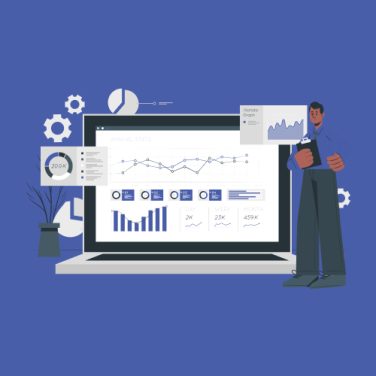HR reporting transforms raw workforce data into structured insights that guide strategic decisions.
By consolidating metrics like headcount, turnover, and attendance into clear formats, organisations gain visibility into people trends and operational health.
Effective HR reporting ensures leaders understand workforce dynamics and can act on real-time information.
- Monitors headcount changes to support staffing and budgeting
- Tracks turnover and retention to inform talent strategies
- Records absenteeism patterns for risk mitigation
- Delivers transparent metrics to executives and managers
How MiHCM simplifies reporting
- Centralises data from payroll, time & attendance, and performance systems
- Provides customisable templates for common HR reporting metrics
- Automates report scheduling and distribution to stakeholders
- Offers privacy-first controls to secure sensitive employee information
This guide will explore key HR reports, best practices for dashboard design, automation tools, data privacy, templates, and real-world examples.
Readers will learn how to leverage MiHCM’s suite to streamline reporting, boost accuracy, and support evidence-based workforce planning.
Key takeaways
- HR reporting turns raw people data into actionable insights
- Combine reporting with analytics for a 360° view of workforce trends
- Automate report generation with MiHCM to save time and ensure accuracy
- Design dashboards that highlight critical metrics and comply with privacy standards
- Use templates and real-world examples to jumpstart your reporting efforts
Why HR reporting matters

Organisations rely on HR reporting to ground workforce decisions in data rather than instinct. By delivering up-to-date metrics in structured formats, HR reporting:
- Drives evidence-based planning: Aligns headcount forecasts with business goals
- Supports compliance: Monitors adherence to labour laws, benefits administration, and internal policies
- Enhances transparency: Provides executives and managers with clear, consistent updates on workforce health
- Identifies trends: Tracks recruitment, retention, and engagement patterns over time
- Boosts efficiency: Centralises data to reduce manual consolidation and reporting errors
Without robust HR reporting, companies risk missed warning signs—such as rising attrition or unexplained absenteeism—that can erode productivity and employee morale.
A reliable reporting framework empowers HR teams to spot issues early, reallocate resources effectively, and demonstrate the department’s impact on organisational performance.
HR reporting vs HR analytics
While often mentioned together, HR reporting and HR analytics serve distinct purposes:
- HR reporting consolidates historical data into structured formats—tables, charts, and dashboards—to answer “what happened”.
- HR analytics applies statistical methods and predictive models to uncover patterns, root causes, and forecast future outcomes—answering “why” and “what’s next”.
When used in tandem, reporting feeds reliable data into analytics models. For example, a turnover report identifies rising attrition, then predictive analytics may reveal drivers such as manager effectiveness or compensation gaps. In practice:
- Compliance vs. Forecasting: Reporting ensures accurate records for audits; analytics forecasts staffing needs and retention risks.
- Monthly Snapshots vs. Trend Analysis: Reports provide monthly headcount snapshots; analytics uncovers seasonality or recruitment funnel leaks.
Together, HR reporting and analytics deliver a comprehensive toolkit: structured insights for immediate action and strategic foresight to shape long-term workforce planning.
Key HR reporting metrics and tracking
Tracking the right HR reporting metrics is essential for a clear view of workforce health. Below is a summary table of core metrics.
| Metric | Definition | Purpose |
|---|---|---|
| Headcount & Growth Rate | Number of active employees and percentage change | Monitors workforce size trends |
| Turnover & Retention | Voluntary/involuntary exits vs. retention rate | Identifies risk areas and retention success |
| Absenteeism | Average days absent per employee excluding approved leave | Highlights attendance issues |
| Time-to-Hire & Time-to-Fill | Days from requisition to offer acceptance/onboarding | Assesses recruitment efficiency |
| Cost per Hire & Training ROI | Total recruiting/training spend divided by hires or outcomes | Links investment to results |
| Engagement & Pulse Scores | Employee sentiment via surveys and eNPS | Gauges morale and identifies improvement areas |
Regularly monitoring these metrics through automated dashboards ensures HR teams can detect anomalies, adjust strategies quickly, and demonstrate the impact of people initiatives on business objectives.
Essential types of HR reports
- Headcount report: Monthly snapshots of total employees by department, location, and contract type.
- Turnover & retention report: Breakdown of voluntary versus involuntary exits, exit interview insights, and hotspots.
- Absenteeism report: Visualises attendance patterns, unplanned leave costs, and department-level comparisons.
- Engagement & pulse survey report: Tracks survey participation, eNPS scores, and action plans by team.
- Recruitment funnel report: Conversion rates from application to interview to offer acceptance.
- Compensation & benefits report: Reviews payroll spend, benefit enrolment rates, and cost trends.
These HR reports form the backbone of a robust reporting program, enabling stakeholders to focus on the metrics that matter most to organisational success.
Automating HR reporting: Tools and best practices
Automation brings consistency, speed, and accuracy to HR reporting. Key considerations include:
- Scheduled reports: Deliver daily, weekly, or monthly updates without manual intervention.
- Custom filters: Tailor outputs by department, location, or date range.
- Multi-format exports: Support CSV, Excel, PDF, and direct API integrations.
- Data validation: Ensure source data integrity before report generation.
MiHCM’s suite:
- Auto-generates reports based on stakeholder requirements
- Distributes via email or embed in portals
- Leverages APIs to pull data from payroll, time & attendance, and performance systems
Features: HR analytics for better decision making; efficiency in HR Department
Benefits: Reduce manual reporting effort and boost accuracy; Accelerate management’s decision-making with on-demand reports.
Designing effective HR reporting dashboards
Well-designed dashboards make HR reporting metrics accessible at a glance. Follow these principles:
- Clarity: Use clear labels, consistent colour schemes, and logical layouts.
- Chart selection: Line charts for trends, bar charts for comparisons, pie charts for compositions.
- Interactivity: Enable drilldowns, filters, and tooltips for deeper exploration.
- Branding: Apply company colours and logos to foster stakeholder buy-in.
- Real-time updates: Connect live data with MiHCM Data & AI’s connectors to keep dashboards current.
Combining these elements ensures dashboards remain focused, user-friendly, and aligned with organisational objectives.
HR reporting data privacy and ethics
Protecting employee data is paramount in HR reporting. Best practices include:
- Comply with GDPR, CCPA, and local labour regulations to avoid penalties.
- Anonymise sensitive metrics and limit visibility to aggregate data where possible.
- Implement role-based permissions in MiHCM Enterprise and Lite to control access.
- Maintain audit logs for report generation, modifications, and distribution.
- Train HR teams on ethical data handling, transparency, and obtaining employee consent.
Embedding privacy and ethics into reporting workflows safeguards trust and ensures responsible use of people data.
HR reporting templates and examples
Kickstart your reporting with ready-made templates and examples:
- Download Excel templates for headcount, turnover, and hiring reports.
- Explore PDF walkthroughs showcasing annotated charts and commentary.
- Leverage MiHCM’s built-in report templates tailored for common use cases.
- Customise templates with company-specific KPIs, branding, and commentary fields.
- Embed templates in SharePoint or Google Drive to enable collaborative editing and version control.
These examples demonstrate how structured designs and clear annotations make reports more actionable for stakeholders.
HR reporting case studies in action
- Global manufacturing: Automated turnover reports identified high-exit teams, reducing overall turnover by 15% within one year.
- Tech startup: Recruitment funnel dashboards highlighted drop-offs, cutting time-to-hire by 30%.
- Retail chain: Real-time attendance reporting optimised labour scheduling, lowering overtime costs by 12%.
- Professional services: Multi-country payroll reports ensured compliance, eliminating late-filing penalties across four regions.
These HR reporting examples underscore how data-driven insights drive measurable improvements in retention, efficiency, and compliance.
Integrating HR reporting into decision-making

Embedding HR reporting into business processes ensures data drives action:
- Align report delivery with leadership meeting cadences—e.g., monthly exec updates.
- Use reporting insights to inform workforce planning, budgeting, and headcount approvals.
- Embed HR reports within CRM and ERP dashboards for cross-functional visibility.
- Set alert thresholds in MiHCM to trigger notifications when metrics breach critical values.
- Review and refine reporting needs quarterly with stakeholders to maintain relevance.
Regular integration fosters a data-driven culture, ensuring HR metrics directly influence strategic and operational decisions.
Next steps: Implementing HR reporting
To launch or enhance your HR reporting program:
- Assess current data maturity and identify reporting gaps.
- Select the right MiHCM modules and configure report settings.
- Train HR teams on report creation, interpretation, and secure distribution.
- Establish governance for data quality checks, template updates, and access controls.
- Monitor adoption, gather stakeholder feedback, and iterate on report designs over time.
Following these steps ensures a scalable, secure, and impactful HR reporting framework that supports continuous improvement.



